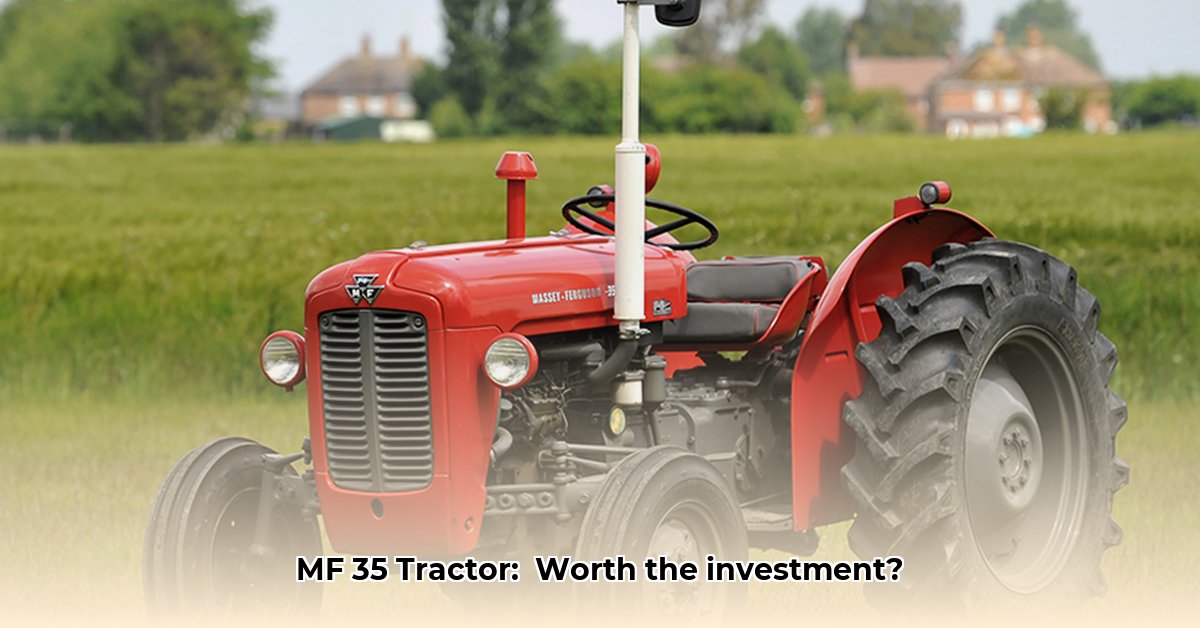
Tractor MF 35: A Look at Price, History, and Sustainable Farming
The Massey Ferguson 35 (MF 35) tractor—a symbol of agricultural history—holds surprising relevance in today's sustainable farming movement. This guide explores its price, historical impact, and unexpected connection to modern environmentally conscious agricultural practices. We'll examine its past, present value, and potential role in the future of farming. For more on tractor depreciation, see this helpful resource.
Figuring Out the Price of a Used MF 35 Tractor
Pricing a used MF 35 involves several key factors. Condition is paramount; a meticulously restored tractor commands a significantly higher price than a rusty, neglected one. Location influences pricing due to regional demand variations. A complete tractor, with all original parts, is more valuable than one with missing components. Prior restoration also impacts value, with restored tractors fetching premium prices.
| Factor | Price Impact |
|---|---|
| Condition | Excellent condition increases value; damage lowers it. |
| Location | Regional demand dictates price fluctuations. |
| Completeness | Complete tractors with original parts are worth more. |
| Restoration History | Restored tractors command higher prices. |
The MF 35: A Tractor That Changed Farming
The MF 35, a mainstay of the 1960s, revolutionized farming. Prior to its widespread adoption, many farms relied on animal power or less efficient machinery. The MF 35 significantly increased productivity, impacting rural economies and lifestyles. However, the effect on small family farms remains a topic of ongoing historical debate. Did this technology disproportionately benefit larger operations? The answer is complex and requires further study.
The MF 35 and Sustainable Farming: An Unexpected Connection
While not a modern sustainable technology itself, the MF 35 holds valuable lessons for today's agriculture. Analyzing its design, strengths, and weaknesses provides insight into the long-term consequences of agricultural technology. For example, comparing its fuel consumption to modern, fuel-efficient tractors highlights advancements in sustainable practices. Modern designs showcase impressive fuel efficiency improvements and significantly reduced harmful emissions. This comparison underscores the substantial advancements in sustainable agricultural technology.
Lessons from the Past: A Look Back at Farming Technology
The MF 35's legacy isn't just about nostalgia; it illustrates the evolution of agricultural technology and its impact on sustainability. It serves as a benchmark, highlighting progress while emphasizing the ongoing need for innovation. Examining past technological advancements broadens our understanding of the trajectory of sustainable agriculture and the continuous development of equipment.
The Future of Sustainable Agriculture: Innovation Continues
Sustainable farming is an ongoing journey. The MF 35's story emphasizes the continuous nature of this journey. Modern practices like GPS-guided planting and reduced-till farming are the culmination of decades of progress. Just as the MF 35 revolutionized its era, future technologies will continue reshaping sustainable agriculture. Ongoing research and development promise even more efficient and environmentally friendly farming practices. The evolution of farming is a dynamic and exciting field.
How to compare the environmental impact of vintage tractors like the Massey Ferguson 35 with modern sustainable farming equipment
Comparing the environmental impact requires a holistic approach. While extending the life cycle of existing equipment reduces waste, fuel efficiency differences must be considered. A comprehensive assessment should include fuel consumption per hectare, maintenance needs, and the carbon footprint of manufacturing both vintage and modern equipment. Modernization efforts, like retrofitting GPS systems onto vintage tractors, can enhance sustainability, bridging the gap between tradition and efficiency.
The Allure of the MF 35 and Sustainable Farming
The MF 35's resurgence reflects a growing interest in simpler, possibly more sustainable practices. However, its environmental impact compared to modern alternatives requires careful analysis. Let's examine the economic and environmental realities.
Cost Considerations: A Vintage Tractor's Economic Appeal
Used MF 35s offer a significant cost advantage over modern equipment, making them attractive to budget-conscious farmers. Simpler mechanics often lead to lower maintenance costs, reducing reliance on specialized technicians.
Environmental Footprint: A Deeper Dive
Comparing environmental impact requires considering both the positive and negative aspects. Extending the tractor’s lifespan reduces manufacturing waste. However, potentially higher fuel consumption needs to be accounted for using data to determine fuel efficiency per hectare.
Maintainability and Parts: A Balancing Act
While simpler mechanics reduce repair costs, the availability and cost of parts for older models can be challenging. Community networks and shared knowledge become essential resources in this context.
Bridging the Gap: Modernization of Vintage Machines
Retrofitting modern technologies, such as GPS guidance systems, can improve the efficiency and sustainability of older tractors. However, compatibility and potential damage to the original machinery should be carefully evaluated.
The Verdict: A Case-by-Case Approach
The suitability of a vintage tractor for sustainable farming depends on individual farm characteristics, resources, and specific agricultural operations. A careful, individualized assessment is necessary.